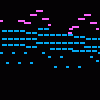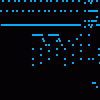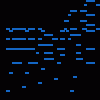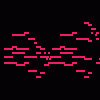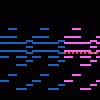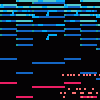#
TITLE
18

Chemical Plant Zone - Sonic 2
by Pretzel bread
1:49
- Add to queue
- Open sequence
- Copy sequence link
47

Franz Liszt - Csardas Macabre
by pianoman12345
7:02
- Add to queue
- Open sequence
- Copy sequence link
101

Life Will Change [Persona 5]
by IRLBlackBeard
4:25
- Add to queue
- Open sequence
- Copy sequence link
168

***** - Undertale (piano)
by Nick Pharis (KC)
4:32
- Add to queue
- Open sequence
- Copy sequence link
220

The Lost One's Weeping - Neru
by thewildsavvy
3:33
- Add to queue
- Open sequence
- Copy sequence link
280
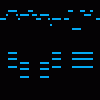
Can I Put My Balls in Yo Jaws
by AsteroidDeer
0:24
- Add to queue
- Open sequence
- Copy sequence link
343

BGH Music - Flying (Piano Song)
by Nikolasz18
3:15
- Add to queue
- Open sequence
- Copy sequence link
362
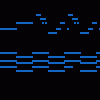
The Walters - I Love You So.mid
by chewie_cat
2:27
- Add to queue
- Open sequence
- Copy sequence link
365

Bloody Stream (JoJo's Bizarre Adventure OP 2)
1:32
- Add to queue
- Open sequence
- Copy sequence link
578

Somewhere Only We Know - xRyZe14x
by xRyZe14x
4:05
- Add to queue
- Open sequence
- Copy sequence link
581

Rhythm Heaven Fever - Remix 10.mid
by Ethanol
3:57
- Add to queue
- Open sequence
- Copy sequence link
No comments yet
Liszt - Liebestraum No.3 in A♭Major, S. 541
1,207 plays
inspired #4375183, #4043312, #3786231
Download MIDI
· updated 2024-11-24 by ZirconiumMoose
inspired #4375183, #4043312, #3786231
Download MIDI
Liebesträume is a set of three solo piano works (S/G541) by Franz Liszt, published in 1850. Originally the three Liebesträume (Notturni) were conceived as songs after poems by Ludwig Uhland and Ferdinand Freiligrath. In 1850, two versions appeared simultaneously as a set of songs for high voice and piano, and as transcriptions for piano two-hands.
The two poems by Uhland and the one by Freiligrath depict three different forms of love. Uhland's Hohe Liebe (Exalted Love) is saintly, or religious, love: the "martyr" renounces worldly love and "heaven has opened its gates". The second song Seliger Tod (Holy Death) is often known by its first line ("Gestorben war ich") ("I was dead"), and evokes erotic love; "dead" could be a metaphor here referring to what is known as "la petite mort" in French ("I was dead from love's bliss; I lay buried in her arms; I was wakened by her kisses; I saw heaven in her eyes"). Freiligrath's poem for the famous third Notturno is about unconditional mature love, and warning that love lost is miserable: "Love as long as you can! The hour will come when you will stand at graves and mourn" ("O lieb, so lang du lieben kannst").
Liebesträume No. 3 is the last of the three that Liszt wrote, and the most popular, and can be considered as split into three sections, each divided by a fast cadenza requiring dexterous finger work and a very high degree of technical ability.
The same melody is used throughout the entire piece, each time varied, especially near the middle of the work, where the climax is reached.
At the end, the piece dies down into a final chorded section, and has a broken chord for an ending, usually played slowly as if they were individual notes, rather than rippled.
The two poems by Uhland and the one by Freiligrath depict three different forms of love. Uhland's Hohe Liebe (Exalted Love) is saintly, or religious, love: the "martyr" renounces worldly love and "heaven has opened its gates". The second song Seliger Tod (Holy Death) is often known by its first line ("Gestorben war ich") ("I was dead"), and evokes erotic love; "dead" could be a metaphor here referring to what is known as "la petite mort" in French ("I was dead from love's bliss; I lay buried in her arms; I was wakened by her kisses; I saw heaven in her eyes"). Freiligrath's poem for the famous third Notturno is about unconditional mature love, and warning that love lost is miserable: "Love as long as you can! The hour will come when you will stand at graves and mourn" ("O lieb, so lang du lieben kannst").
Liebesträume No. 3 is the last of the three that Liszt wrote, and the most popular, and can be considered as split into three sections, each divided by a fast cadenza requiring dexterous finger work and a very high degree of technical ability.
The same melody is used throughout the entire piece, each time varied, especially near the middle of the work, where the climax is reached.
At the end, the piece dies down into a final chorded section, and has a broken chord for an ending, usually played slowly as if they were individual notes, rather than rippled.
Comments
No comments yet
Link to this sequence: 3604333
Simple
Advanced
Synthesizer
Instrument name
Copy
Load
Clone
Delete
Mute
Solo
Reset
Volume
Delay
Panning
Detune
Reverb
Distort
Equalizer
High
Mid
Low
Bitcrusher
Synth name
Resonance (Q)
LFO
1/4
Envelope
A
D
S
R
Edit Markers
Settings
BPM
Title
Instrument
- Select/deselect notes
- Select/deselect markers
- Save a copy
- Save offline
- Export MP3
- Export WAV
- Export MIDI
- Import MIDI/Sequence File
- Fast graphics
- Invert
- Minor ⇄ Major
- Reverse Selection
- Humanize Selection
- Legatomize Selection
- Fade In Selection
- Fade Out Selection
- Stretch Selection
0
Connect a MIDI keyboard.
Record keyboard and MIDI inputs.
Snap recorded notes to the grid.
Filter recorded notes using the key guide.
Play a metronome. When recording, gives a 4 beat lead in.
OnlineSequencer.net is an online music sequencer. Make tunes in your browser and share them with friends!
Made by Jacob Morgan and George Burdell
·
Hosting 4,192,899 sequences since 2013 ·
Buy us a ☕ ·
Privacy
·



















































































